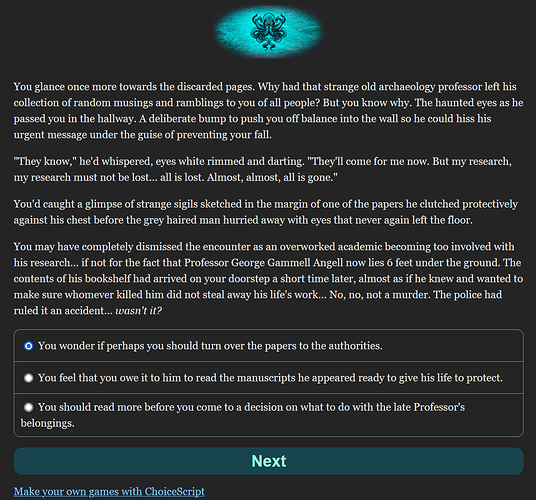One of my wishlist items which I suspect will never come to pass is a customisable setting in addition tothe regular black/white/sepia because you’re right, in their native state all CS games look the same and it’s kinda boring. Are you publishing though HG/COG? Because if not you can to an extent go playing in the code to change things about. (It’s limited without writing scripts, but you can change things like colours, text type). If you’re going to use a custom colour scheme, I recommend adding a script to auto set the game to the “colour set” you’ve altered. Other than that you’re kinda stuck adding images. (If you’re planning on publishing through official channels though, then yeah most alterations and all scripts are not allowed.)
Agree. When I first started writing IF with CS, I kept notepads with each scene mapped out. After a while I found I no longer needed it as a general rule and started finding it actually a little clunky to use the twine interface. Maybe you just end up in the right headspace sooner or later with enough practice? I’ve been fluffing about with ink on and off, I’m not sure why I’m finding it harder to pick up than choicescript as it seems like it shouldn’t be. In saying that I find twine harder to use than CS as well which is a shame as it is a lot more customisable.
For questions sure and I highly recommend it as I’ve had problems solved there heaps of times. Usually lots of people willing to help. For general game discussion/design etc, anything not actually being built for a HG/COG release or not fitting the expected aspects gets very little attention. Not saying that’s bad, there is a specific niche there which is fine, but CS games outside of the official release channels don’t really have a regular discussion platform.
